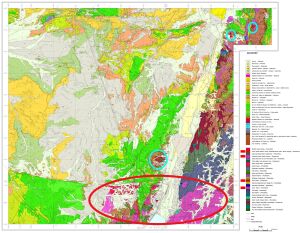Olga V. Anikeevaa,# and Leonid A. Belyaevb,##
 a State Research Institute of Restoration, Moscow, Russia
a State Research Institute of Restoration, Moscow, Russia
b Institute of Archaeology RAS, Moscow, Russia
#E-mail: olganikeeva@yandex.ru
##E-mail: labeliaev@bk.ru
Keywords: archaeology of Palestine, Ancient Egypt, Holy Land, travelers of the 19th century, geology of the Middle East.
The article analyzes the object of archaeology that has not been either dated or functionally defined so far. This is a product made of a large block of granite. In ancient times, it was shaped as a flattened torus with shallow, frequent holes made along the side surface. The stone was first described by E. Robinson during his travels in 1838. At the site of the Russian Mission in Jericho, where it is located, it was observed by many Russian pilgrims and researchers including Archimandrite Antonin (Kapustin), historian A.A. Olesnitsky, and archaeologist M.I. Rostovtsev. The complex which includes the stone has not been examined archaeologically yet. It was possible to determine only the origin of the stone, unusual for Palestine: its granite was mined in the Eastern Desert of Ancient Egypt.
DOI: 10.31857/S0869606322020039







